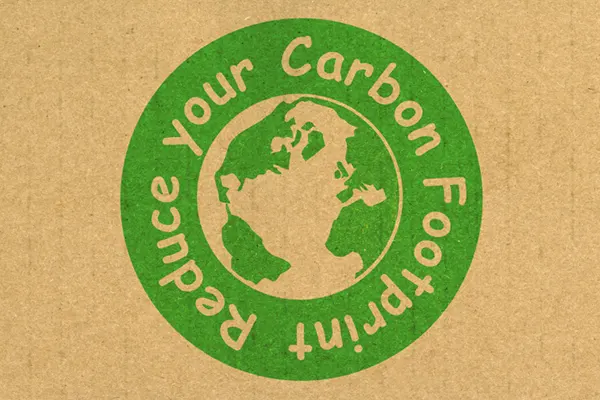
Green Trucking: How to Reduce Your Carbon Footprint as a Truck Driver
In an era where environmental sustainability is a top priority, the trucking industry is no exception to the growing need for greener practices. The transportation sector is one of the largest contributors to carbon emissions, and truck drivers, who spend countless hours on the road, have a unique opportunity to make a significant impact. Green trucking is more than just a trend; it’s becoming an essential part of the industry’s future. Truck drivers and fleet managers are increasingly focusing on eco-friendly trucking practices to reduce fuel consumption, lower emissions, and contribute to a cleaner, healthier environment.
At SAGE Truck Driving Schools, we’re committed to preparing our students not only for safe and efficient driving but also for the challenges of carbon reduction in trucking. In this blog, we’ll explore key strategies for reducing your carbon footprint as a truck driver, including tips on eco-driving for truckers, as well as the latest green technologies shaping the future of the industry.
Why Green Trucking Matters
The trucking industry plays a vital role in the global economy by moving goods across vast distances and ensuring the smooth operation of supply chains. However, this comes at a cost to the environment. Heavy-duty trucks are responsible for a significant portion of transportation-related emissions, contributing to climate change and air pollution.
The good news is that green trucking practices can help mitigate this impact. By adopting eco-friendly techniques, truck drivers and companies can significantly reduce fuel consumption, lower emissions, and improve overall operational efficiency. These practices not only benefit the environment but also offer long-term cost savings for trucking businesses and drivers.
Eco-Friendly Trucking Practices: How to Get Started
Reducing your carbon footprint as a truck driver doesn’t necessarily mean overhauling your entire driving routine. Small changes in driving habits and vehicle maintenance can add up to significant improvements. Here are some practical eco-friendly trucking practices you can start implementing today:
1. Practice Eco-Driving Techniques
Eco-driving for truckers involves adopting driving habits that maximize fuel efficiency and minimize unnecessary emissions. Some key eco-driving techniques include:
- Reduce idling time: Idling wastes fuel and increases emissions. If you’re stopped for more than a minute, consider turning off your engine. Modern trucks are designed to restart easily, and reducing idle time can save both fuel and money.
- Smooth acceleration and braking: Sudden starts and stops can increase fuel consumption. Instead, accelerate gently and brake smoothly to maintain a steady speed and reduce fuel use.
- Use cruise control: When driving on highways, using cruise control helps maintain a consistent speed, which improves fuel efficiency and reduces emissions.
- Maintain a steady speed: Avoid rapid changes in speed by anticipating traffic conditions and using momentum to your advantage, especially when driving downhill.
- Plan efficient routes: Using GPS or route planning tools to avoid traffic and minimize the number of miles traveled can lead to significant fuel savings and lower emissions.
2. Regular Maintenance for Fuel Efficiency
Proper vehicle maintenance is essential for optimizing fuel efficiency and reducing emissions. Even small mechanical issues can lead to decreased fuel economy and increased pollution. Here are a few maintenance practices to ensure your truck is running efficiently:
- Tire pressure: Keep your tires properly inflated. Underinflated tires create more rolling resistance, which increases fuel consumption. Regularly check and maintain tire pressure at the recommended levels.
- Engine tuning: A well-maintained engine performs better and uses fuel more efficiently. Regular tune-ups, oil changes, and air filter replacements can prevent fuel waste and lower emissions.
- Aerodynamic upgrades: Reducing drag can improve fuel efficiency. Consider installing aerodynamic enhancements like side skirts, roof fairings, or even trailer tails to reduce wind resistance and cut fuel consumption.
- Check for fuel leaks: Leaking fuel systems not only waste fuel but also release harmful emissions into the environment. Regularly inspect your truck for leaks and repair them promptly.
3. Use Eco-Friendly Fuel Alternatives
Switching to more sustainable fuel sources is another way to reduce your carbon footprint. While traditional diesel remains the dominant fuel in trucking, the industry is seeing an increasing shift toward greener alternatives. These include:
- Biodiesel: Biodiesel is a renewable fuel made from vegetable oils, animal fats, or recycled restaurant grease. It can reduce greenhouse gas emissions by up to 86% compared to regular diesel.
- Compressed Natural Gas (CNG): CNG is a cleaner alternative to diesel that produces lower levels of nitrogen oxides (NOx) and particulate matter. While it may not be available everywhere, some fleets are transitioning to CNG to lower their environmental impact.
- Electric trucks: While still in the early stages, electric trucks are beginning to make their mark in the industry. These vehicles produce zero emissions and are becoming more viable as battery technology improves. Although electric trucks may not be a practical solution for long-haul drivers just yet, they represent the future of green trucking.
4. Leverage Technology for Efficient Driving
Modern technology offers a variety of tools to help truck drivers optimize fuel efficiency and reduce emissions. Many of these technologies are designed to support eco-driving for truckers by monitoring vehicle performance and providing real-time feedback. Some examples include:
- Telematics systems: Telematics can track driving behavior, fuel consumption, and route efficiency. Fleet managers can use this data to coach drivers on more efficient driving practices and identify areas for improvement.
- Driver assistance systems: Features like adaptive cruise control, lane-keeping assistance, and collision avoidance can help reduce unnecessary acceleration and braking, contributing to fuel savings.
- Fuel-saving apps: Mobile apps that provide fuel price comparisons, route planning, and traffic updates can help drivers plan more efficient trips and reduce unnecessary fuel consumption.
5. Minimize Empty Miles
Another way to reduce your carbon footprint is by minimizing the number of empty miles (also known as deadhead miles) you drive. When trucks operate without a load, they consume fuel without transporting goods, which is both inefficient and environmentally unfriendly. Drivers and fleet managers can reduce empty miles by improving load planning, using load boards to find backhauls, or working with dispatchers to schedule return trips with cargo.
The Future of Green Trucking
The trucking industry is evolving rapidly to meet the growing demand for carbon reduction in trucking. Manufacturers are developing more fuel-efficient engines, alternative fuel vehicles, and electric trucks. Governments and regulatory bodies are also setting stricter emissions standards to encourage cleaner practices.
As a driver, you have the opportunity to contribute to a more sustainable future by embracing eco-friendly trucking practices. By implementing the strategies outlined in this blog, you can reduce your carbon footprint, save on fuel costs, and play a part in building a greener, more efficient transportation industry.
At SAGE Truck Driving Schools, we are committed to training drivers who understand the importance of green trucking and are prepared to meet the challenges of an eco-conscious industry. Whether you’re a seasoned driver or just starting your CDL journey, learning how to drive efficiently and sustainably is an essential skill for the future.
Training the Next Generation of Truck Drivers
The path to a more sustainable trucking industry starts with individual drivers making conscious choices to reduce their environmental impact. By adopting eco-driving practices, maintaining your vehicle for fuel efficiency, exploring alternative fuel options and leveraging technology, you can help reduce emissions and promote a cleaner, greener future.
SAGE Truck Driving Schools is proud to offer CDL training programs that prepare students for success in today’s environmentally conscious world. Together, we can drive toward a more sustainable trucking industry — one mile at a time.
Please fill out the information below and our team will reach out to chat about your options.


